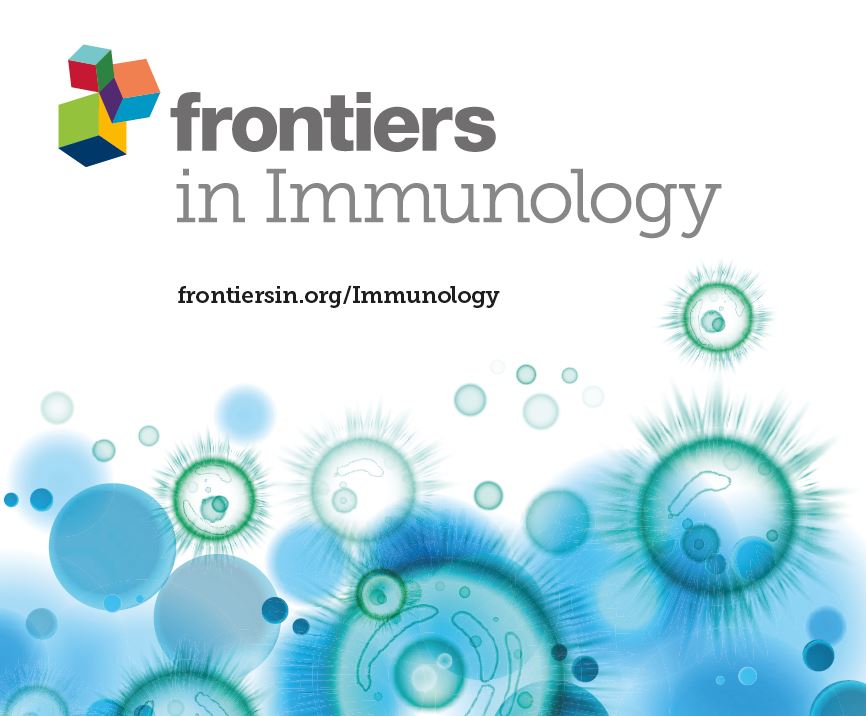Single-cell RNA sequencing reveals the communications between tumor microenvironment components and tumor metastasis in osteosarcoma
IF 5.7
2区 医学
Q1 IMMUNOLOGY
引用次数: 0
Abstract
IntroductionOsteosarcoma is a common type of bone cancer characterized by a poor prognosis due to its metastatic nature. The tumor microenvironment (TME) plays a critical role in tumor metastasis and therapy response. Therefore, our study aims to explore the metastatic mechanism of osteosarcoma, potentially opening new avenues for cancer treatment.MethodsIn this study, we collected data from the GSE152048, GSE14359, and GSE49003 datasets. Differentially expressed genes (DEGs) were identified in osteosarcoma cases with primary and metastatic features using R software and the limma package. Gene ontology (GO) and Kyoto Encyclopedia of Genes and Genomes (KEGG) pathway enrichment analyses were performed to investigate metastasis-related genes. A protein–protein interaction (PPI) network was established using the STRING database to further analyze these metastasis-associated genes. The abundances of different cell types with a mixed cell population were estimated using the CIBERSORT approach. The scRNA-seq data were analyzed by the Seurat package in R software, and intercellular communications were elucidated using the CellChat R package.ResultsIn this study, 92 DEGs related to metastasis were identified, including 41 upregulated and 51 downregulated genes in both the GSE14359 and GSE49003 datasets. Metastasis-associated pathways were identified, including those involving the cyclin-dependent protein kinase holoenzyme complex, transferase complex, transferring phosphorus-containing groups, SCF ubiquitin ligase complex, and the serine/threonine protein kinase complex. KEGG and PPI network analyses revealed 15 hub genes, including Skp2, KIF20A, CCNF, TROAP, PHB, CKS1B, MCM3, CCNA2, TRIP13, CENPM, Hsp90AB1, JUN, CKS2, TK1, and KIF4A. Skp2 has been known as an E3 ubiquitin ligase involved in osteosarcoma progression. The proportion of CD8+ T cells was found to be higher in metastatic osteosarcoma tissues, and high expression of PHB was associated with a favorable prognosis in osteosarcoma patients. Additionally, 23 cell clusters were classified into eight cell types, including chondrocytes, MSC, T cells, monocytes, tissue stem cells, neurons, endothelial cells, and macrophages. The 15 hub genes were expressed across various cell types, and interactions between different cell types were observed.ConclusionOur study reveals the intricate communication between tumor microenvironment components and tumor metastasis in osteosarcoma.单细胞 RNA 测序揭示骨肉瘤中肿瘤微环境成分与肿瘤转移之间的联系
导言骨肉瘤是一种常见的骨癌,由于其转移性,预后较差。肿瘤微环境(TME)在肿瘤转移和治疗反应中起着至关重要的作用。因此,我们的研究旨在探索骨肉瘤的转移机制,为癌症治疗开辟新的途径。方法在这项研究中,我们从 GSE152048、GSE14359 和 GSE49003 数据集中收集了数据。使用 R 软件和 limma 软件包鉴定了具有原发性和转移性特征的骨肉瘤病例中的差异表达基因(DEGs)。基因本体(GO)和京都基因组百科全书(KEGG)通路富集分析用于研究转移相关基因。利用 STRING 数据库建立了蛋白-蛋白相互作用(PPI)网络,以进一步分析这些转移相关基因。使用 CIBERSORT 方法估算了混合细胞群中不同细胞类型的丰度。该研究在GSE14359和GSE49003数据集中发现了92个与转移相关的DEGs,包括41个上调基因和51个下调基因。研究发现了与转移相关的通路,包括涉及细胞周期蛋白依赖性蛋白激酶全酶复合物、转移酶复合物、含磷基团转移、SCF泛素连接酶复合物和丝氨酸/苏氨酸蛋白激酶复合物的通路。KEGG和PPI网络分析发现了15个枢纽基因,包括Skp2、KIF20A、CCNF、TROAP、PHB、CKS1B、MCM3、CCNA2、TRIP13、CENPM、Hsp90AB1、JUN、CKS2、TK1和KIF4A。众所周知,Skp2 是一种 E3 泛素连接酶,参与骨肉瘤的进展。研究发现,转移性骨肉瘤组织中 CD8+ T 细胞的比例较高,而 PHB 的高表达与骨肉瘤患者的良好预后相关。此外,23个细胞群被分为8种细胞类型,包括软骨细胞、间充质干细胞、T细胞、单核细胞、组织干细胞、神经元、内皮细胞和巨噬细胞。我们的研究揭示了骨肉瘤中肿瘤微环境成分与肿瘤转移之间错综复杂的交流。
本文章由计算机程序翻译,如有差异,请以英文原文为准。
求助全文
约1分钟内获得全文
求助全文
来源期刊

Frontiers in Immunology
IMMUNOLOGY-
CiteScore
9.80
自引率
11.00%
发文量
7153
审稿时长
14 weeks
期刊介绍:
Frontiers in Immunology is a leading journal in its field, publishing rigorously peer-reviewed research across basic, translational and clinical immunology. This multidisciplinary open-access journal is at the forefront of disseminating and communicating scientific knowledge and impactful discoveries to researchers, academics, clinicians and the public worldwide.
Frontiers in Immunology is the official Journal of the International Union of Immunological Societies (IUIS). Encompassing the entire field of Immunology, this journal welcomes papers that investigate basic mechanisms of immune system development and function, with a particular emphasis given to the description of the clinical and immunological phenotype of human immune disorders, and on the definition of their molecular basis.
 求助内容:
求助内容: 应助结果提醒方式:
应助结果提醒方式:


